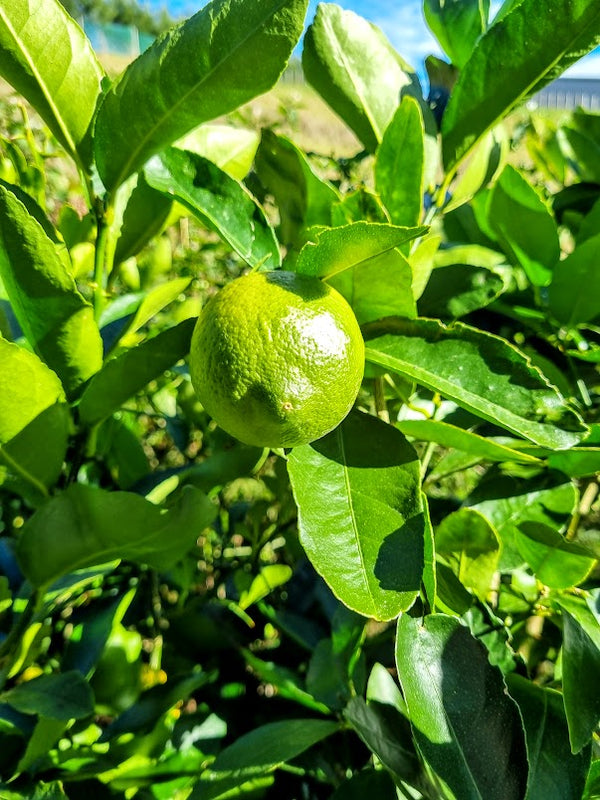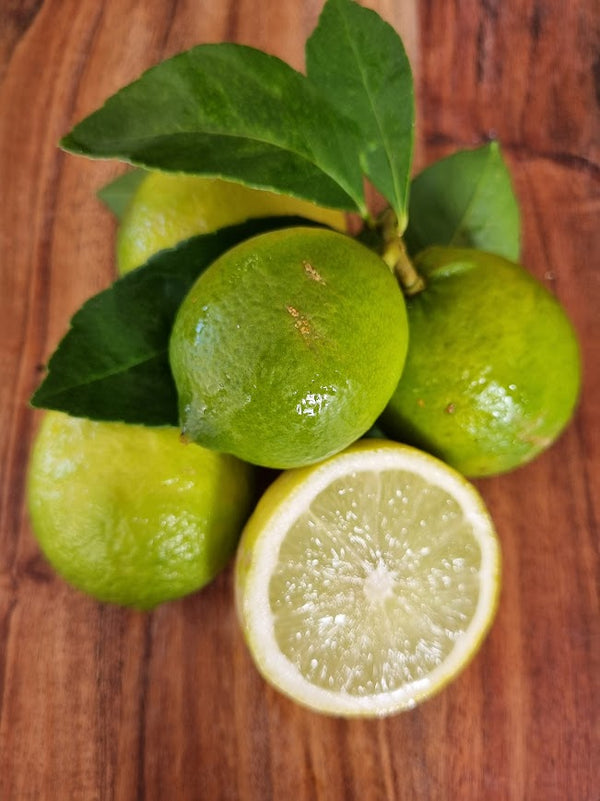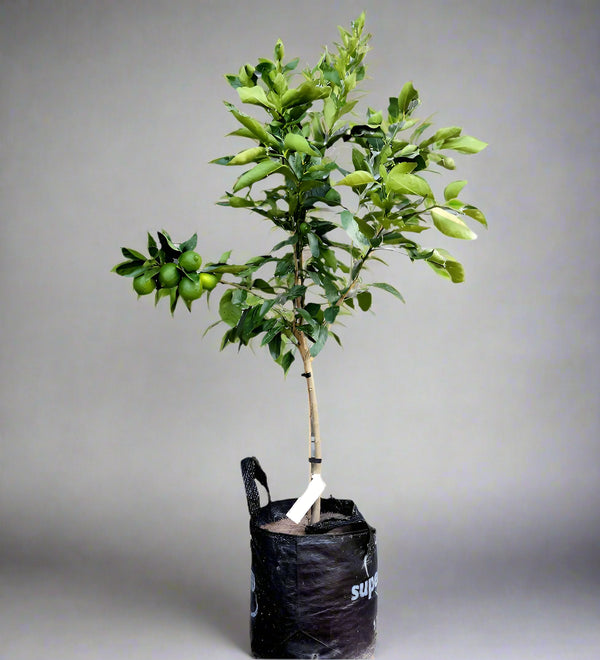
Bearss Lime Tree
Tax included
Shipping calculated at checkout
Please note: OurEstablished Range, Medium Standard Range (14L pot), andTall Standard Range trees are available for pickup only, as their size exceeds standard courier limits.
The Bearss Lime tree is a popular citrus known for its reliable fruit production, high juice content, and cold tolerance. Bearss Limes are typically larger than Tahitian limes and have a rounded or slightly oval shape and smooth, thin skin. The green fruits gradually turn lime yellow as they ripen, offering a visual cue for picking.
Bearss limes are normally seedless, adding to their convenience for culinary uses. They are compact reaching a mature height of 2-3 meters which makes Bearss Lime trees suitable for both gardens and larger pots. Fragrant white flowers adorn the tree during summer, adding to its aesthetic appeal.
One of the key strengths of Bearss lime trees is its cold tolerance. It can withstand light frosts once established, making it a good option for the cooler regions of New Zealand.
|
Names |
Bearss, Bearss Lime, Citrus latifolia 'Bearss' |
|
Origin |
Porterville, California at the nursery of J.T. Bearss. It is thought it is the result of a tree grown from the seed of a Tahitian lime. |
|
Mature Size |
Bushy, spreading growth habit, reaching a mature height of 2-3 meters. They're suitable for both gardens and large pots. |
|
Foliage |
The leaves are glossy, dark green, and relatively thornless, making them less prickly than other citrus varieties. Fragrant white blossoms add to the tree's aesthetic appeal during spring and summer. |
|
Soil |
Well drained, rich soil. |
|
Position |
Like most citrus trees, Bearss limes thrive in full sun and well-drained soil. They benefit from regular watering, especially during hot summers, and occasional fertilisation with citrus-specific fertiliser. |
|
Flavour |
Refreshingly tart and acidic flavour with a bright, intense lime aroma. They're less acidic than Tahitian limes and offer a good balance of tartness and sweetness. |
|
Fruiting |
Can fruit year-round, with peak production in winter. |
|
Fruit Uses |
They're perfect for adding a zesty touch to dishes, pies and creating delicious cocktails, mocktails or even marmalades and relishes. |






